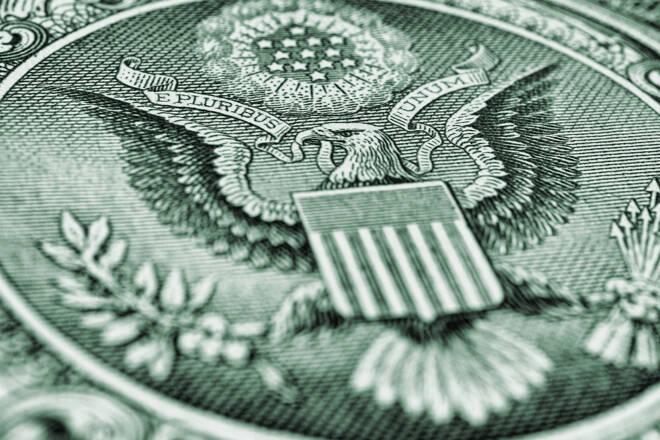Advertisement
Advertisement
EUR/USD, GBP/USD, USD/CAD, USD/JPY Forecasts – DXY Slides Following Powell’s Cautious Inflation Remarks
By:
Key Points:
- USD Index: Weakened after Powell's remarks on inflation and rate cuts.
- EUR/USD: Anticipation for ECB rate decision; possible easing in June.
- GBP/USD: Sterling strengthens amid UK's final pre-election fiscal plans.
- USD/JPY: Dollar falls as BoJ considers exiting negative interest rates.
- USD/CAD: Weaker dollar following Bank of Canada's rate decision.
US Dollar Index
The U.S. dollar weakened against all major currencies following comments from Federal Reserve Chair Jerome Powell. Powell expressed uncertainty about continued progress in inflation control, indicating the central bank’s plan to lower its benchmark interest rate later in the year.
Fed Chair Powell’s Remarks
In his statement to the House Financial Services Committee, Powell maintained that if the economy follows expected trends, easing policy restraint might be appropriate this year. His comments largely mirrored previous statements, but traders hoping for early interest rate cuts were left disappointed.
Market Reactions
Powell’s reluctance to confirm rate cut possibilities in the first half of the year led some traders to reverse their previously bullish positions on the U.S. dollar. Further insights are anticipated from Powell’s upcoming address to the Senate Banking Committee.
Economic Data Insights
Recent data showed a modest increase in U.S. private payrolls and a slowdown in wage growth, aligning with a cooling labor market. These developments precede the much-awaited Labor Department employment report for February.
Short-Term Forecast
Given Powell’s cautious stance and recent economic data, a bearish outlook for the U.S. dollar seems plausible in the short term. The market will closely watch the upcoming employment report and Fed actions for clearer direction.
Technical Analysis
The U.S. Dollar Index (DXY) is trading sharply lower after crossing to the weak side of both the 200-day and 50-day moving averages. With both of those levels now resistance, the index is in a potential freefall with 102.853 the next target.
EUR/USD
Traders are preparing for the European Central Bank’s (ECB) upcoming interest rate announcement. The expectation is that the ECB will maintain the current rate at a historic high of 4%. Key interest lies in any indications of when the rate cuts might commence. The consensus is that the ECB will reiterate its existing stance and that Thursday’s decision will not significantly alter the economic forecast. It is widely believed that the ECB is gearing up for a potential easing of rates in June.
Technically, the EUR/USD broke out to the upside when it crossed the 50-4H moving average, currently at 1.0863.
GPB/USD
The Sterling is soaring against the dollar as traders assessed the UK’s latest fiscal plans, which could be the final budget before the expected elections later in the year. British Finance Minister Jeremy Hunt, in his recent statement, avoided any surprises by announcing a cut in National Insurance Contributions and maintaining the current rates for fuel and alcohol duties.
The GBP/USD is maintaining its steady pace after crossing to the strong side of the 50-4H moving average at 1.2674. The size and duration of the rally has put the market within striking distance of the February 2 main top a 1.27722.
USD/JPY
Technically, the USD/JPY is lower and in a move that could develop into a freefall with the nearest support, the uptrending 50-4H moving average at 147.681.
USD/CAD
The U.S. dollar weakened against the Canadian dollar following the Bank of Canada’s decision to maintain its key overnight rate as anticipated. The central bank stated that it was premature to consider a rate cut, citing the ongoing presence of underlying inflation.
The USD/CAD is getting pounded on the 4-Hour chart. Downside momentum is strong as the Forex pair heads toward 200-4H moving average support at 1.3479.
About the Author
James Hyerczykauthor
James Hyerczyk is a U.S. based seasoned technical analyst and educator with over 40 years of experience in market analysis and trading, specializing in chart patterns and price movement. He is the author of two books on technical analysis and has a background in both futures and stock markets.
Advertisement
